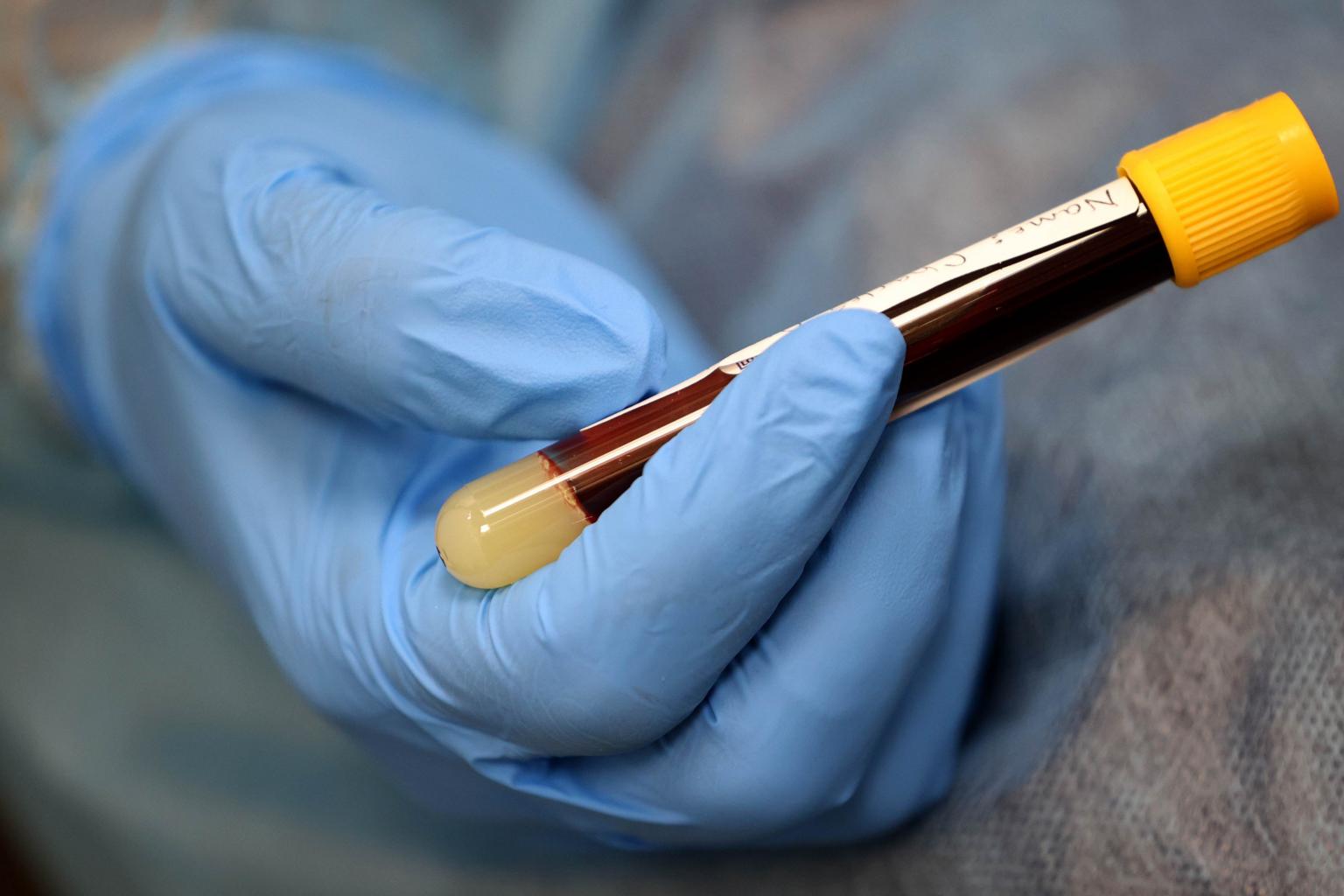Coronavirus pandemic
All you need to know about serology tests
Sign up now: Get ST's newsletters delivered to your inbox

A serology test detects the presence of antibodies and can show if the person might have been infected in the past.
PHOTO: AFP
Follow topic:
Apart from polymerase chain reaction (PCR) tests, the Ministry of Health (MOH) is increasingly turning to serology tests, particularly in patients who show no symptoms, to check if they have past infections.
Q: What is the difference between PCR and serology tests?
A: PCR tests detect the presence of viral genetic material and are routinely used to determine if a person has any virus or is undergoing viral shedding.
But PCR tests do not indicate if the person is currently infectious or is a past case, as some patients may have prolonged viral shedding.
A serology test detects the presence of antibodies and can show if the person might have been infected in the past.
Q: When does the MOH conduct a PCR or serology test?
A: PCR is the main test used for community testing. This includes people coming forward with symptoms or those getting tested at workplaces or during high-risk area sweeps by the authorities. PCR tests are also used to test people under quarantine or if an infection is being picked up during targeted screening to identify cases early and isolate them.
A serology test will also be used in certain circumstances to check if a person had the infection in the past. It could be for people who are asymptomatic or have a very low viral load when they were checked with PCR. It will also be used for individuals who displayed symptoms a very long time ago but are only now testing positive, for whatever reason, with a PCR test.
It is important to note that these laboratory tests need to be looked at together, factoring in the different symptoms and how they present, before a decision is made on whether it is likely to be an old case or a more recent one.
Q: Why is being asymptomatic or symptomatic an important factor in deciding which test to use?
A: When a person shows symptoms, the ministry can see when these symptoms first started. This, in turn, is likely to indicate when the infection began.
But infections have also been detected in people displaying no symptoms - known as being asymptomatic. A PCR test alone is often not enough to tell if this infection is recent or an old one, so a serology test is needed. This detects antibodies and the time needed for these antibodies to form.

If the patient has a negative serology test but a positive PCR one, it suggests a more recent infection, perhaps even within the first week and before antibodies have formed. A positive serology test suggests that the infection is not so recent. Such tests are particularly useful when health officials cannot use other evidence, such as the patient's history or symptoms, to determine if the infection is fresh or an older one.
This is why a serology test is especially important for people who are asymptomatic.
Q: Are there any indicators on a PCR test that hint at a more recent or older infection?
A: One characteristic would be the cycle threshold value, or CT value. This reflects the ease with which evidence of the virus being present can be isolated.
A high CT value, typically above 30, suggests that it is not a recent infection and very likely even past the period when a person could infect others.
Q: Do people with a positive serological test face quarantine or stay-home notices?
A: There are two groups involved - the infected person and his contacts. If a case is PCR-positive and the serology test indicates that it might be a past infection, doctors will determine how to manage the patient. This information will also be useful in determining the length of contact tracing. If it is an old infection, tracing might have to reach back over a longer period of time.
There is no easy or single answer. Contact tracing requires a lot of people, and is a very time-consuming and laborious process. There is no one-size-fits-all algorithm; it has to be tailored to the individual and also to the specific situation.
• If you have a question, e-mail us at askst@sph.com.sg

